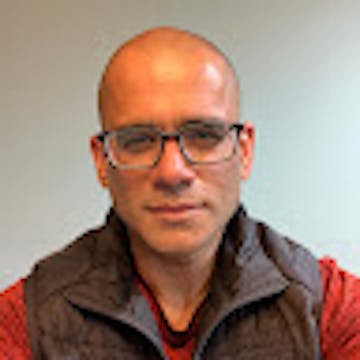Skip to content
Focusing on ritual, we will develop tools that blend the disciplines of Anthropology, Neuroscience and AI to form a shared new landscape of study and practice for bridge building between science and traditionsUsing cutting edge Neuroscientific and AI tools we will empirically demonstrate and revitalize the adaptive role of ritual for humanity, fleshing out key portions of the theory of ritual developed by Revealing ritual to be a “globally vital technology”, for distributed coordination and communication in socioecological networks — Worlds — where “institutional facts” are built from acts and utterances
Post-pandemic, the effect of technology on social relations is impossible to overestimate. Both for better and worse. VR religious services, virtual happy hour, remote learning, zoom fatigue, spirit tech, are just a few of the concepts added to our shared consciousness since 2020 We all feel a visceral need to take a step back and see how we might better ground the new —global — worlds we are building using technologies including AI, VR, and moreOur project is a way to do just that, with a team that is taking a radically Neuroscience and AI oriented approach, while teaming with the wisest researchers in the Anthropology of Religion and Culture

 Ritual, AGI and distributed world building
Ritual, AGI and distributed world building
SyncRite proposal straw-man (in DARPA's "Heilmeier Catechism" format, with WIP back up)
🧭 Elevator pitch
Reveal the action and language of ritual as vital for humanity’s distributed world building. Demonstrating its foundational role as a type of AGI technology, important for the operation of mixed ecological systems that include intelligent agents with language
How Artificial General Intelligence (AGI) and Ritual are related
Two short articles below with extracted snippets that directionally indicate why the two open problems of general intelligence and ritual might reasonably be related.
Is there an organizing principle for all intelligent life? ... At a time when the AI community is stepping back from traditional algorithms in deep and reinforcement learning, this line of questioning is garnering increasing attention.
AI experts believe building a true intelligence requires a deeper understanding of the premium standard for biological intelligence, the “final frontier” of scientific discovery: the human brain. Still, if the brain were simple enough for us to fully understand its mechanics and describe it so succinctly, then would we be too dumb to discover such a principle?
Karl Friston, the most-cited neuroscientist alive, doesn’t think so. To be alive, Friston says, is to act in ways that reduce the gulf between your expectations and your sensory inputs. He calls his idea the Free Energy principle.
Anthropologists have long noted that the repetitiveness of ritual results in a lack of information—what information could be gleaned from endless repetition, such as extending the same greeting or reciting the same prayer day after day? Rappaport recognized that what emerges from ritual repetition and invariance is a sense of certainty and veracity. Consequently, the moral messages carried by ritual seem correct, their arbitrariness is transformed to necessity, and they seem natural and continuous with the physical world
One of many areas of practical value — Distributed World Building
Our belief is that ritual and language are the key technologies that humans have used to build worlds with entities like currency, trust, time, and value — collectively. This is what we mean by Distributed World Building.
Cognitive representations of these worlds are slowly encoded into each of our brains by the various traditions we participate in — as cumulatively rewired connections of neurons. A promising link between AGI and Ritual. This is what the two articles in the section above — read together — are hinting at.
Revealing that the exploration and exploitation dilemma that is important in AI, Economics, Psychology, and Social Science is only 2/3 of the full problem. Before we can use or learn about the world, it has to be made. This is taking place all the time in each of us via language.
This important third element of world building is a distributed process that we think can now be studied with ethnographic data and experiments, to be understood and modeled. The research ahead will offer clues as to other ways we might work ourselves out of the explore/exploit dilemmas that are everywhere around us.
Why now?
Our project can be seen as part of a diverse response to integrate technology-driven practices with ancient traditions (e.g. Psychedelic Science, Neuroscience of religion, Neuroanthropology, AI Ethics)
Want to print your doc?
This is not the way.
This is not the way.

Try clicking the ··· in the right corner or using a keyboard shortcut (
CtrlP
) instead.